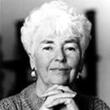Christmas farm
(Kids Holiday)
J/HOL JP RAY
2 available
J/HOL JP RAY
1 available
J/HOL JP RAY
1 available
Copies
| Location | Call Number | Status |
|---|---|---|
| Central - Kids - Holiday - Picture Books | J/HOL JP RAY | Available |
| Central - Kids - Holiday - Picture Books | J/HOL JP RAY | Available |
| Aurora Hills - Kids - Holiday - Picture Books | J/HOL JP RAY | Available |
| Cherrydale - Kids - Holiday - Picture Books | J/HOL JP RAY | Available |
| Shirlington - Kids - Holiday - Picture Books | J/HOL JP RAY | Available |
Description
More Details
Notes
Similar Titles From NoveList
Similar Authors From NoveList
Published Reviews
Booklist Review
As in their previous collaboration, Pumpkins (1992), Ray and Root once again focus on a holiday crop. Wilma, a gray-haired gardener, decides to plant a huge field of Christmas trees. She orders hundreds of small starts of balsam and enlists the help of Parker, the little boy next door: He was five, like the seedlings. Parker helps measure straight rows and dig holes for 744 trees, and he continues to help through the following years. Root's appealing watercolor-and-gouache illustrations invite inspection, from scenes of the field in different seasons to those that show Wilma and Parker's harmonious teamwork over time. Ray gracefully conveys an acceptance of natural cycles: some trees are lost to deer that dug in the snow to chew the sweet green tips. The year that Parker is 10, the team sells their first 566 trees and then, looking to the future, order dozens of new seedlings. All the numbers add up to an added math theme in a story that lovingly depicts the hard work, cooperation, and patience necessary to grow crops. An author's note offers more about Christmas-tree history and farming.--Nolan, Abby Copyright 2008 Booklist
School Library Journal Review
Gr 1-5-Could a middle-aged woman and a five-year-old-boy plant and care for more than 600 trees? Perhaps that is one of the miracles of the holidays. Wilma is tired of growing petunias and sunflowers, but can't decide what to cultivate next. Then she realizes that she has everything she needs to grow Christmas trees, including an enthusiastic helper-her neighbor Parker. She orders 62 dozen small starts of balsam, or five-year-old seedlings, and she and the boy plant them. Finally, after five challenging years, they have trees to sell. That Christmas, they think about the 566 families who have their trees and place an order for 83 dozen new seedlings to plant in the spring. This lovely tale celebrates intergenerational friendship and determination, growth and nature, and the joy of the holiday season. Root's graceful watercolor and gouache illustrations beautifully capture these elements and more, and an author's note gives additional information about Christmas trees and how they grow.-Mara Alpert, Los Angeles Public Library (c) Copyright 2010. Library Journals LLC, a wholly owned subsidiary of Media Source, Inc. No redistribution permitted.
Horn Book Review
(Primary) Wilma and her five-year-old neighbor Parker plant 744 "small starts of balsam" in the spring. "'Will they be ready by Christmas?' asked Parker. 'Nooooo,' said Wilma." In fact, five Christmases come and go before the trees are ready. Over the years, Wilma and Parker care for their crop, some of which they lose to animals and weather. When Parker is ten, 597 trees remain, finally ready to be sold as Christmas trees. Ray's quiet, leisurely narrative reflects the attentive work and planning involved in farming trees. Root's color-drenched watercolor and gouache paintings honor the characters' warm intergenerational friendship and rise to the challenge of portraying a slowly changing rural landscape through many seasons. A concluding author's note offers history about the tradition of decorating trees and about Christmas tree cultivation. From HORN BOOK, (c) Copyright 2010. The Horn Book, Inc., a wholly owned subsidiary of Media Source, Inc. No redistribution permitted.
Kirkus Book Review
Wilma is a successful gardener who lives happily by herself on a farm in New England. One year she decides she would like to grow Christmas trees, and with the help of her neighbor boy, Parker, they plant and grow hundreds of trees together. They work side by side for five years, until the trees are large enough to be sold, and then they order more trees to plant the following spring. Ray tells her story in simple, lyrical language that focuses on the trees and their growth. She doesn't have to spell out that Wilma and Parker are great friends and that shared goals and work forge strong bonds. All those aspects of the nuanced plot are apparent in the spare story and in the beautifully understated watercolor illustrations. Root's illustrations often use a warm gold palette for interior scenes in Wilma's sunny kitchen and outdoors on her farm in summer; winter vistas show deep blue skies with speckles of falling snow, deep green trees and glowing lights from distant farmhouses. (Picture book. 4-7) Copyright Kirkus Reviews, used with permission.
Booklist Reviews
As in their previous collaboration, Pumpkins (1992), Ray and Root once again focus on a holiday crop. Wilma, a gray-haired gardener, decides to plant a huge field of Christmas trees. She orders hundreds of small starts of balsam and enlists the help of Parker, the little boy next door: He was five, like the seedlings. Parker helps measure straight rows and dig holes for 744 trees, and he continues to help through the following years. Root's appealing watercolor-and-gouache illustrations invite inspection, from scenes of the field in different seasons to those that show Wilma and Parker's harmonious teamwork over time. Ray gracefully conveys an acceptance of natural cycles: some trees are lost to deer that dug in the snow to chew the sweet green tips. The year that Parker is 10, the team sells their first 566 trees and then, looking to the future, order dozens of new seedlings. All the numbers add up to an added math theme in a story that lovingly depicts the hard work, cooperation, and patience necessary to grow crops. An author's note offers more about Christmas-tree history and farming. Copyright 2008 Booklist Reviews.
School Library Journal Reviews
Gr 1-5 –Could a middle-aged woman and a five-year-old-boy plant and care for more than 600 trees? Perhaps that is one of the miracles of the holidays. Wilma is tired of growing petunias and sunflowers, but can't decide what to cultivate next. Then she realizes that she has everything she needs to grow Christmas trees, including an enthusiastic helper–her neighbor Parker. She orders 62 dozen small starts of balsam, or five-year-old seedlings, and she and the boy plant them. Finally, after five challenging years, they have trees to sell. That Christmas, they think about the 566 families who have their trees and place an order for 83 dozen new seedlings to plant in the spring. This lovely tale celebrates intergenerational friendship and determination, growth and nature, and the joy of the holiday season. Root's graceful watercolor and gouache illustrations beautifully capture these elements and more, and an author's note gives additional information about Christmas trees and how they grow.–Mara Alpert, Los Angeles Public Library
[Page 97]. Copyright 2008 Reed Business Information.Reviews from GoodReads
Citations
Ray, M. L., & Root, B. (2008). Christmas farm (First edition.). Harcourt.
Chicago / Turabian - Author Date Citation, 17th Edition (style guide)Ray, Mary Lyn and Barry. Root. 2008. Christmas Farm. Orlando, Fla.: Harcourt.
Chicago / Turabian - Humanities (Notes and Bibliography) Citation, 17th Edition (style guide)Ray, Mary Lyn and Barry. Root. Christmas Farm Orlando, Fla.: Harcourt, 2008.
Harvard Citation (style guide)Ray, M. L. and Root, B. (2008). Christmas farm. First edn. Orlando, Fla.: Harcourt.
MLA Citation, 9th Edition (style guide)Ray, Mary Lyn, and Barry Root. Christmas Farm First edition., Harcourt, 2008.





























